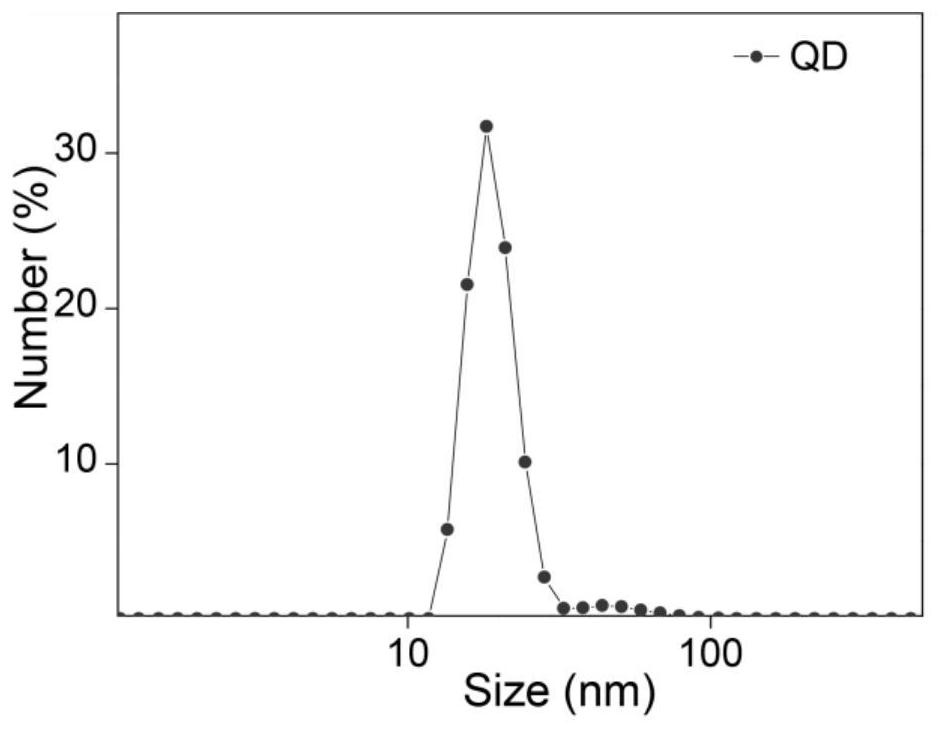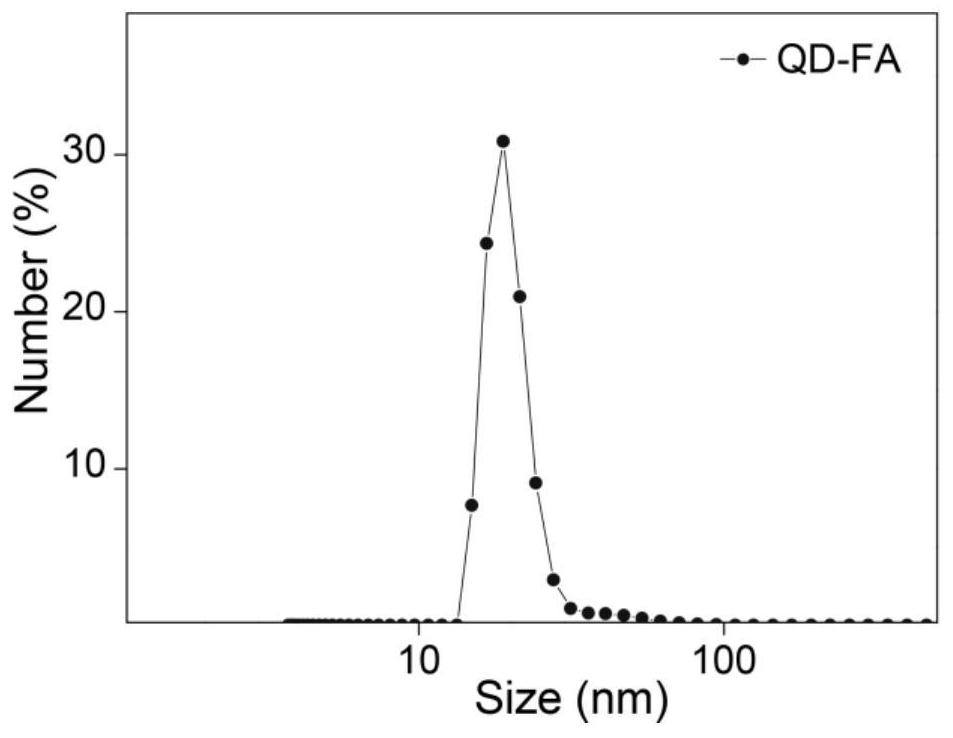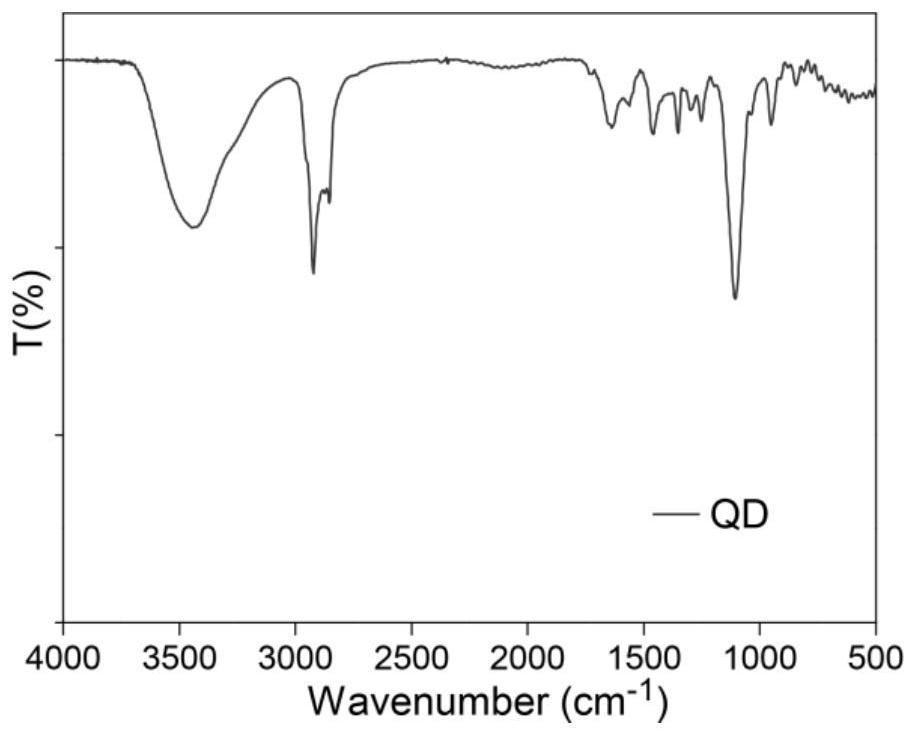Surface biocompatibility modification method of semiconductor nanocrystal
A biocompatibility and semiconductor technology, applied in the direction of nanotechnology, nanotechnology, chemical instruments and methods, etc., can solve the problems of poor stability of nanoparticles in water phase, cumbersome processing steps, large consumption of organic solvents, etc., and achieve low cost, Low-cost, environment-friendly effect
- Summary
- Abstract
- Description
- Claims
- Application Information
AI Technical Summary
Problems solved by technology
Method used
Image
Examples
Embodiment 1
[0071] Preparation of water-soluble semiconductor nanocrystals by ligand replacement reaction: PEG molecules (PEG molecular weight: 1000) with a thiol group at one end and a methoxy group at the other end were selected as ligands, and 10 mg of dodecyl thiol ligand-modified CuInS 2 The @ZnS semiconductor nanocrystals were dispersed in 5 mL of ethyl acetate, and then added to 10 mL of ethyl acetate solution containing 200 mg of ligands. The mixed solution was heated to 55 °C and stirred with nitrogen for 5 h, and then extracted with water to obtain PEG-modified Aqueous quantum dots were purified by dialysis or ultrafiltration to remove free ligands, and finally dispersed in ultrapure water and stored in a refrigerator at 4°C for further use.
Embodiment 2
[0073] Preparation of water-soluble semiconductor nanocrystals by ligand replacement reaction: PEG molecules (PEG molecular weight: 2000) with a thiol group at one end and a methoxy group at the other end were selected as ligands, and 10 mg of dodecyl mercaptan, oleic acid, oleylamine Ligand co-modified CuInSe 2 @ZnS was dispersed in 5 mL of toluene, and then added to 10 mL of toluene solution containing 200 mg of ligands. The mixed solution was heated to 80 °C and stirred with nitrogen for 5 h, and then extracted with water to obtain PEG-modified aqueous quantum dots. The free ligands were removed by ultrafiltration and finally dispersed in ultrapure water and stored in a refrigerator at 4°C for further use.
Embodiment 3
[0075] Preparation of water-soluble semiconductor nanocrystals by ligand replacement reaction: PEG molecules (PEG molecular weight: 2000) with a thiol group at one end and a methoxy group at the other end were selected as ligands, and 10 mg of dodecyl thiol ligand-modified CuInSe 2 @ZnS was dispersed in 5 mL of ethyl acetate, then added to 20 mL of ethyl acetate solution containing 50 mg of ligand, the mixed solution was heated to 50 °C and stirred with nitrogen for 5 h, and then extracted with water to obtain PEG-modified aqueous quantum At this point, the free ligands were removed by dialysis or ultrafiltration purification, and finally dispersed in ultrapure water and stored in a refrigerator at 4°C for further use.
PUM
 Login to View More
Login to View More Abstract
Description
Claims
Application Information
 Login to View More
Login to View More - R&D
- Intellectual Property
- Life Sciences
- Materials
- Tech Scout
- Unparalleled Data Quality
- Higher Quality Content
- 60% Fewer Hallucinations
Browse by: Latest US Patents, China's latest patents, Technical Efficacy Thesaurus, Application Domain, Technology Topic, Popular Technical Reports.
© 2025 PatSnap. All rights reserved.Legal|Privacy policy|Modern Slavery Act Transparency Statement|Sitemap|About US| Contact US: help@patsnap.com



